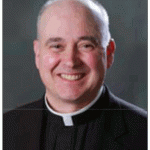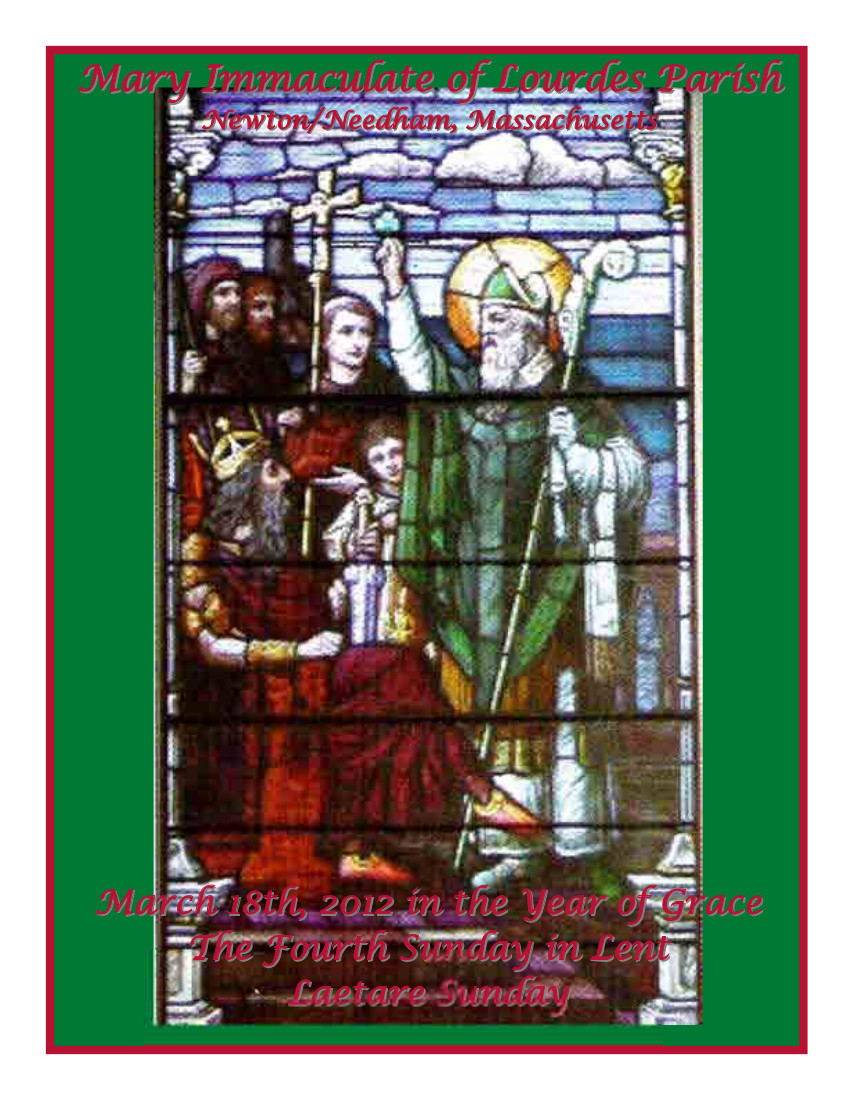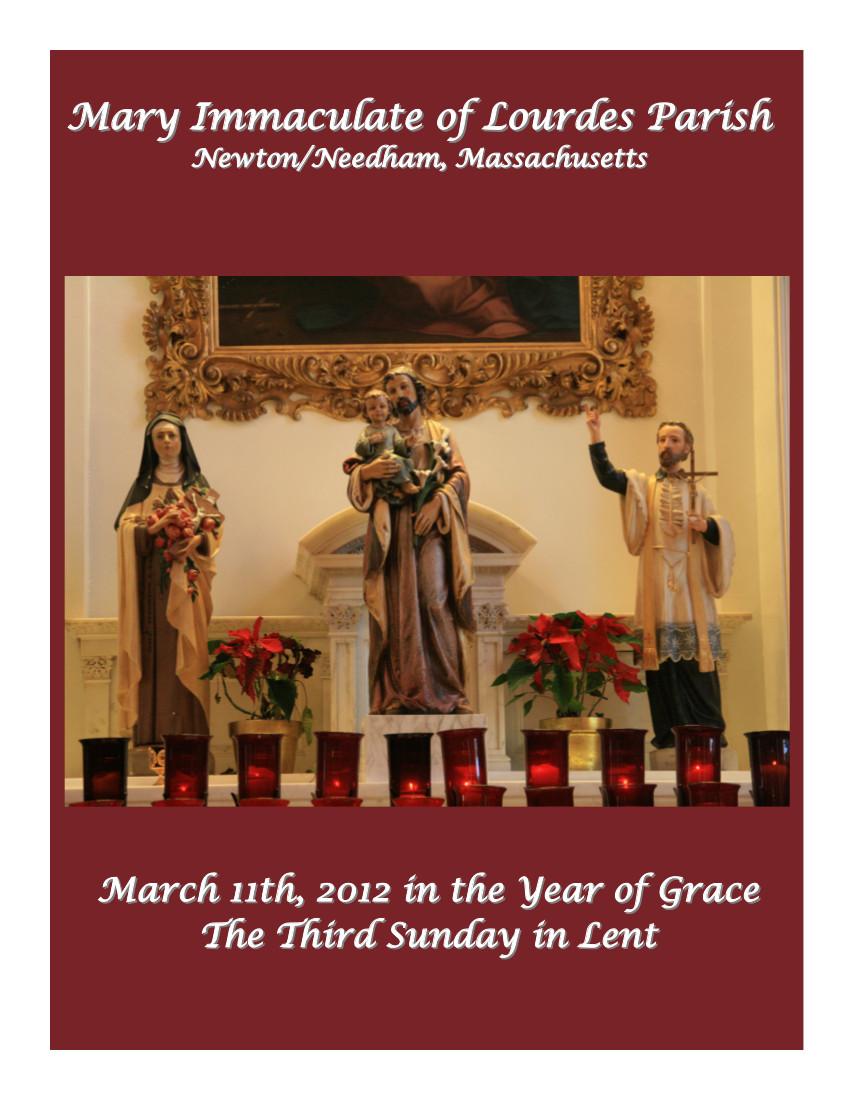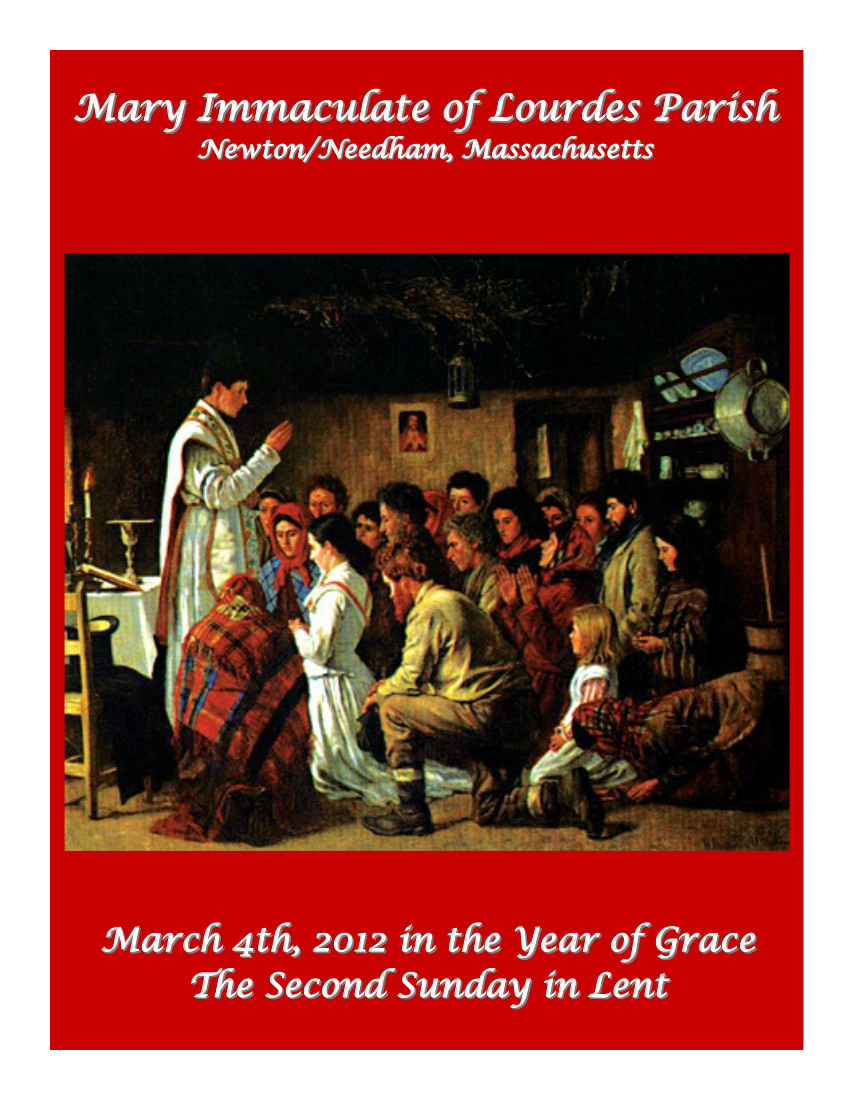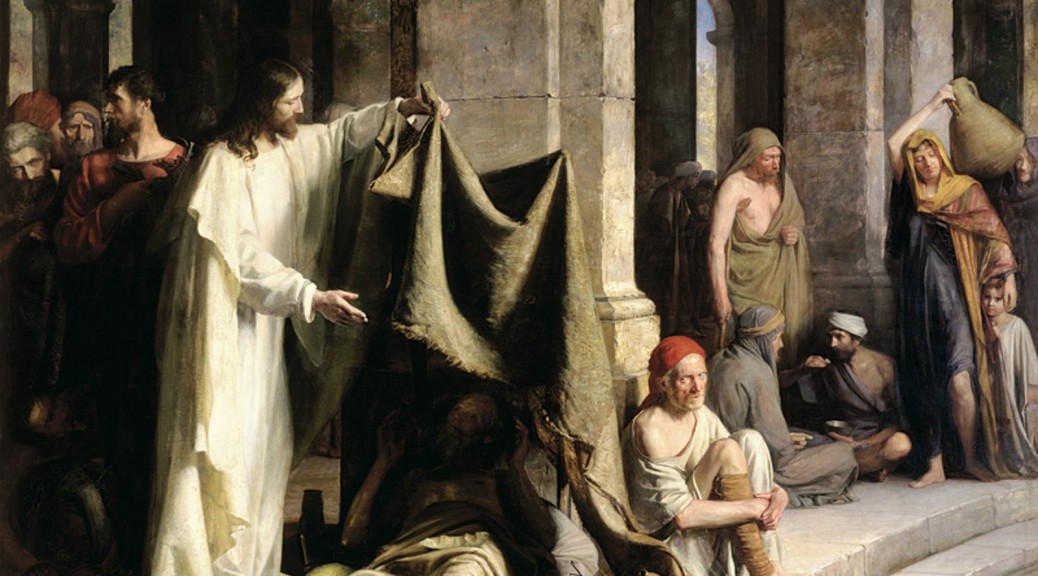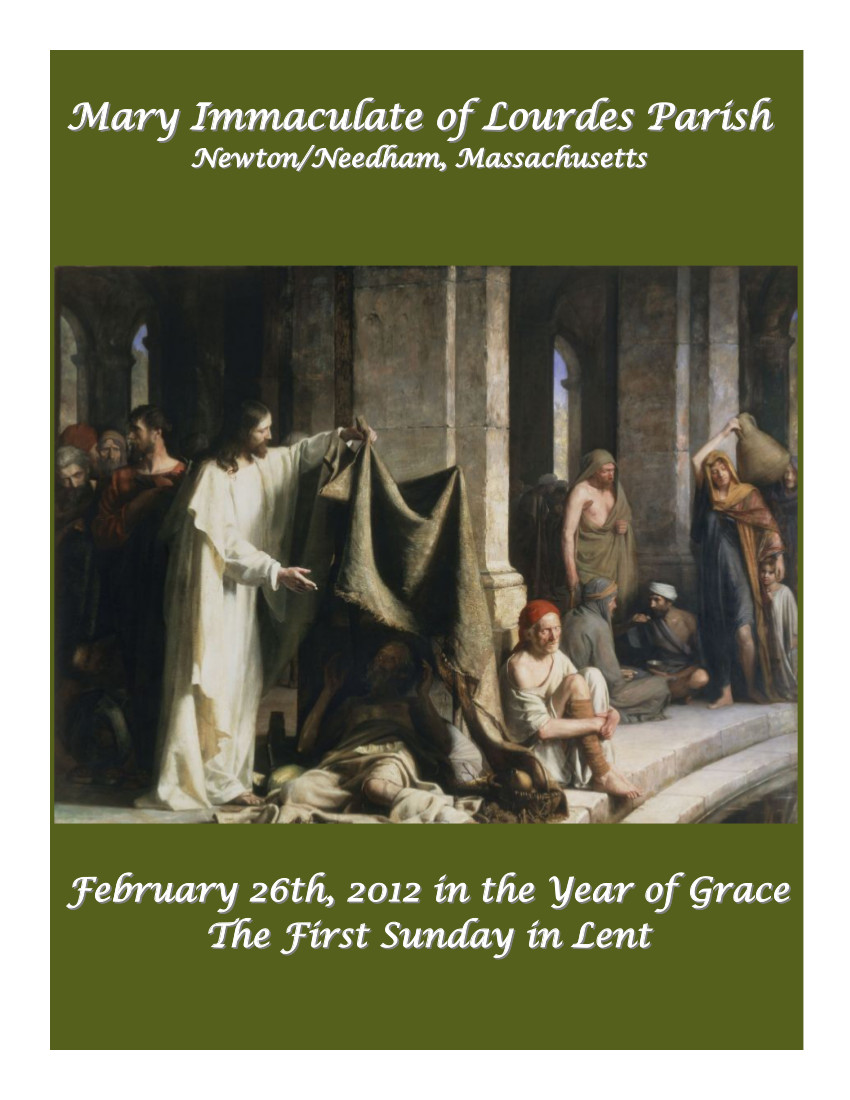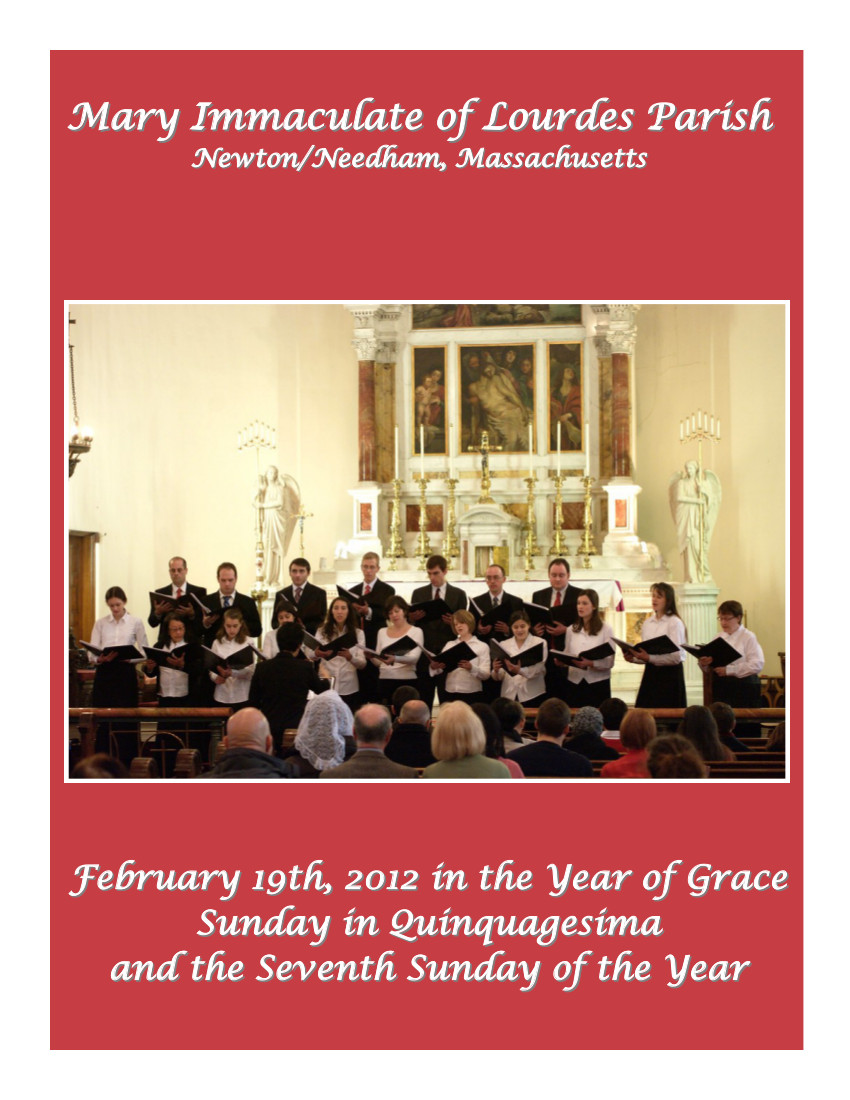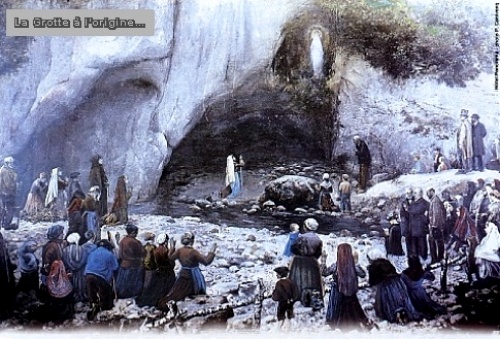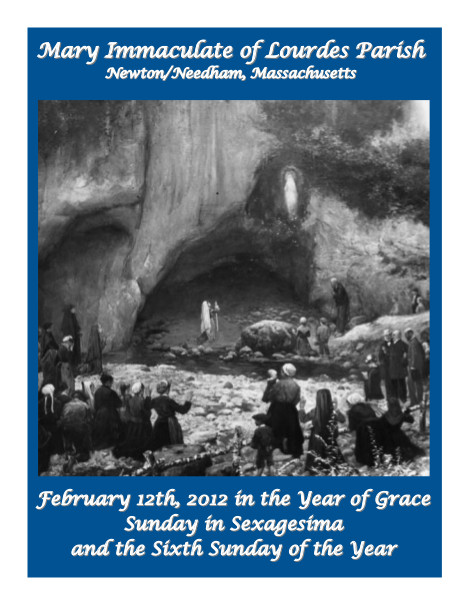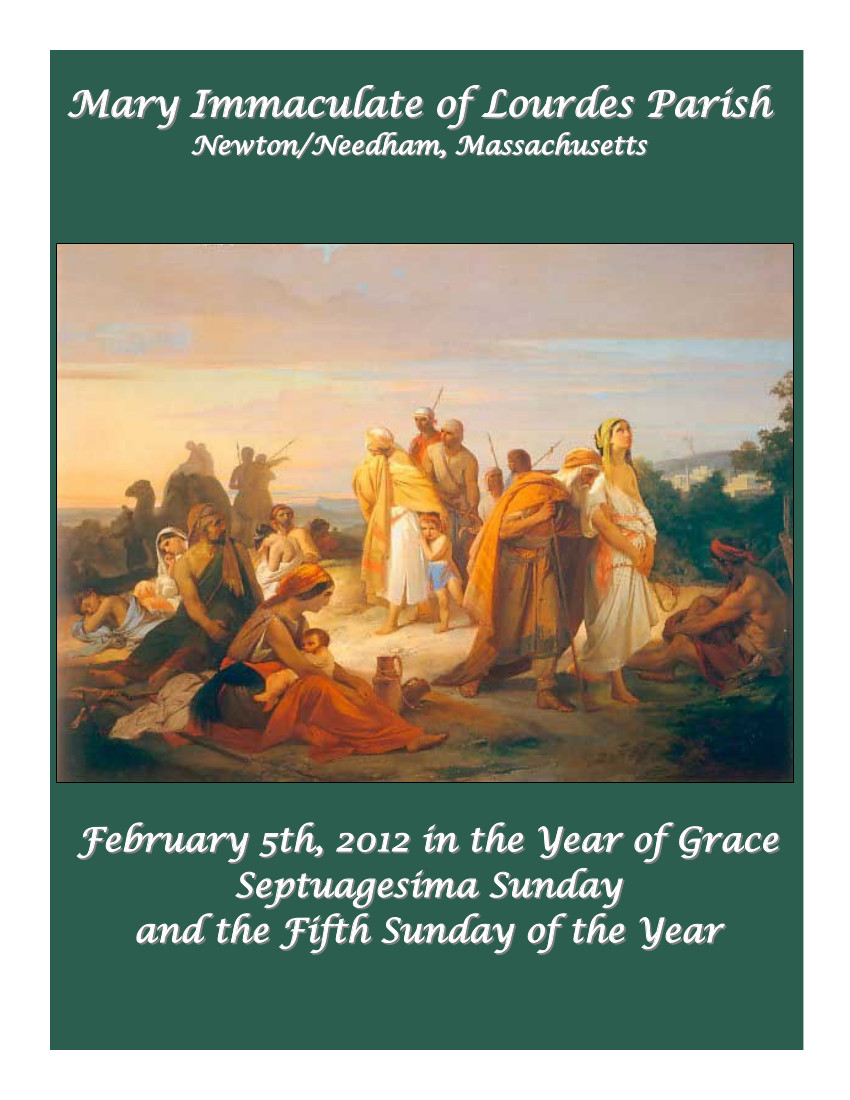(Pastor’s Note from the Mary Immaculate of Lourdes Bulletin for March 18, 2012)
Recently one of our parishioner’s came across a book for spiritual reading entitled: Rediscover Catholicism: A Spiritual Guide to Living with Passion and Purpose, by Matthew Kelly. This parishioner liked it so much that she made a donation of several hundred copies of the book to our parish of Mary Immaculate of Lourdes. (I would have
liked to acknowledge this parishioner by name for her generosity but she has asked to remain anonymous.)
The books are set up in the front vestibule of the church and are offered gratis. The only stipulation is that you take a copy with the intention of actually reading it or with the intention at least of passing it on to somebody who might benefit from it and who would not take it amiss. The book is written in an engaging popular style and is quite solid in its representation of the Catholic faith to our contemporary American society.
To give an example, I quote from the beginning of the chapter on Spiritual Reading:
Books change our lives. Most people can identify a book that has marked a life-changing period for them. It was probably a book that said just the right thing at just the right time. They may have been just words on a page, but they came to life for you and in you, and because of them you will never again be the same. Books really do change our lives, because what we read today walks and talks with us tomorrow. Earlier in our discussion of prayer and contemplation, we spoke of the cause-and-effect relationship between thought and action. Thought determines action, and one of the most powerful influences on thought is the material we choose to read. Reading is to the mind what exercise is to the body and prayer is to the soul… The goal of spiritual reading is to ignite the soul with a desire to grow in virtue and thus become the best-version-of-oneself. Like all other spiritual exercises and activities, spiritual reading seeks to encourage us to live a life of holiness.
Matthew Kelly is making a basic but important point. The habit of Spiritual Reading is one of the building blocks of the moral and spiritual life. It is something every Catholic over the age of 14 has to take responsibility for. We are responsible both for what’s in our minds— and for what’s not in our minds, but should be. We need to continually refresh our thinking and inform ourselves by good, solid reading material that helps us to think about God and the things of God, and that in turn helps us when we seek to pray to God. Ten to fifteen minutes a day is not too hard to find in even the busiest life. If you are making spiritual reading part of your Lenten observance, well and good. But make sure that it becomes a good habit to carry over in your every-day life once the Lenten Season is done.
